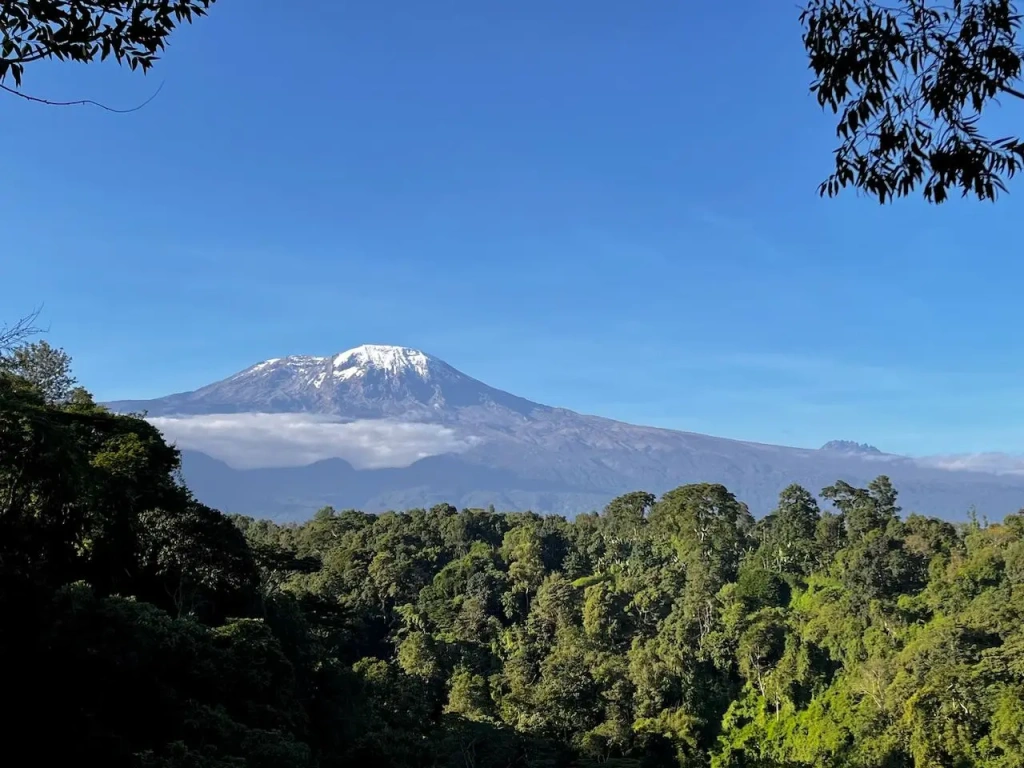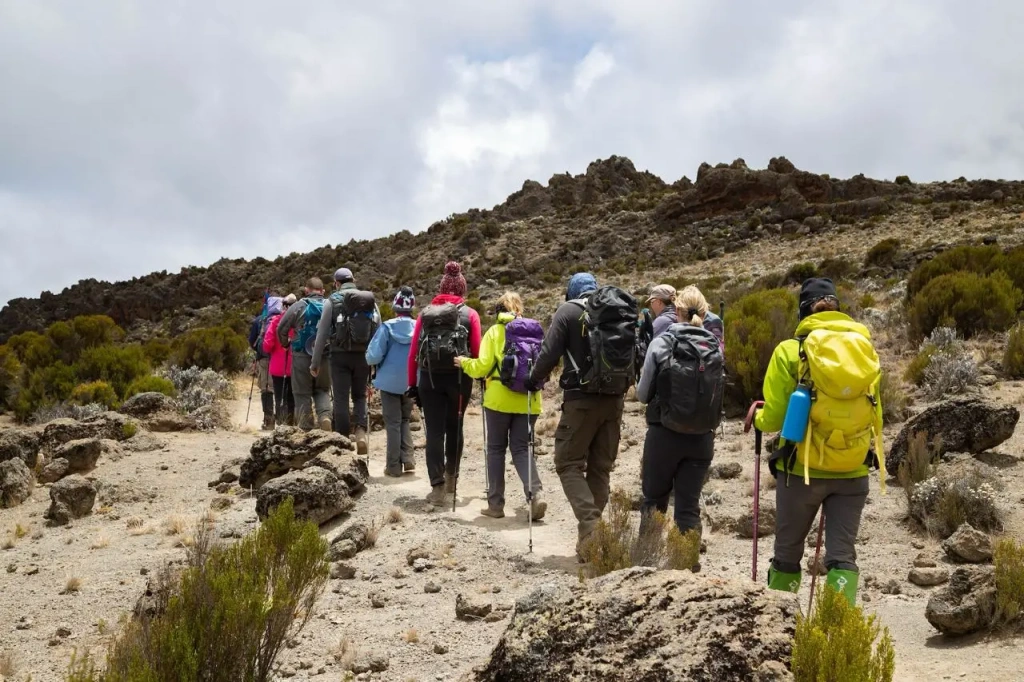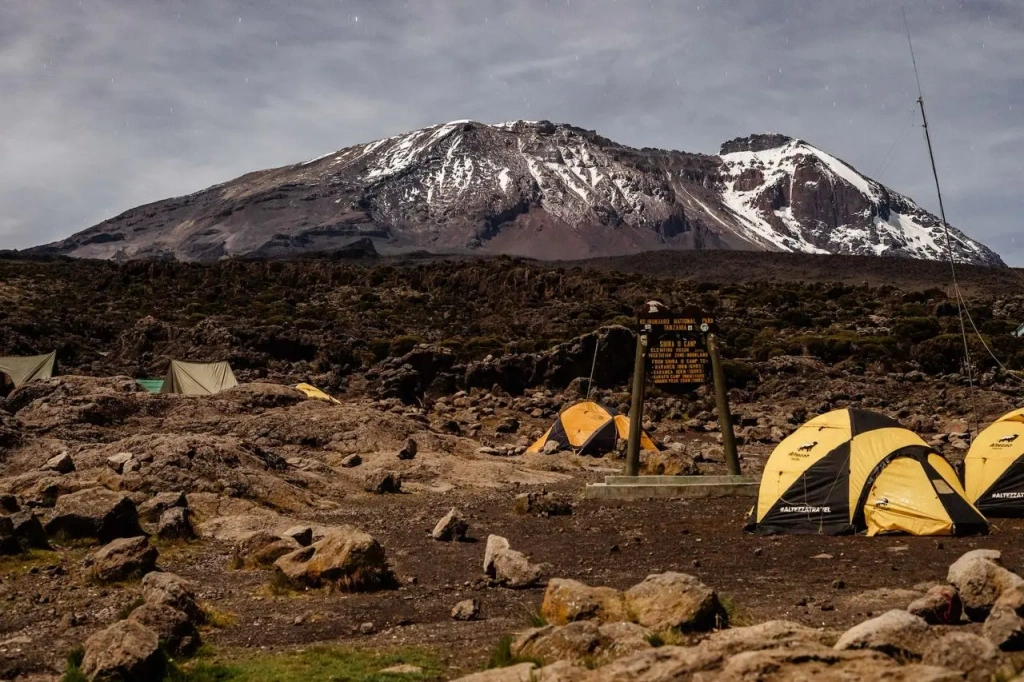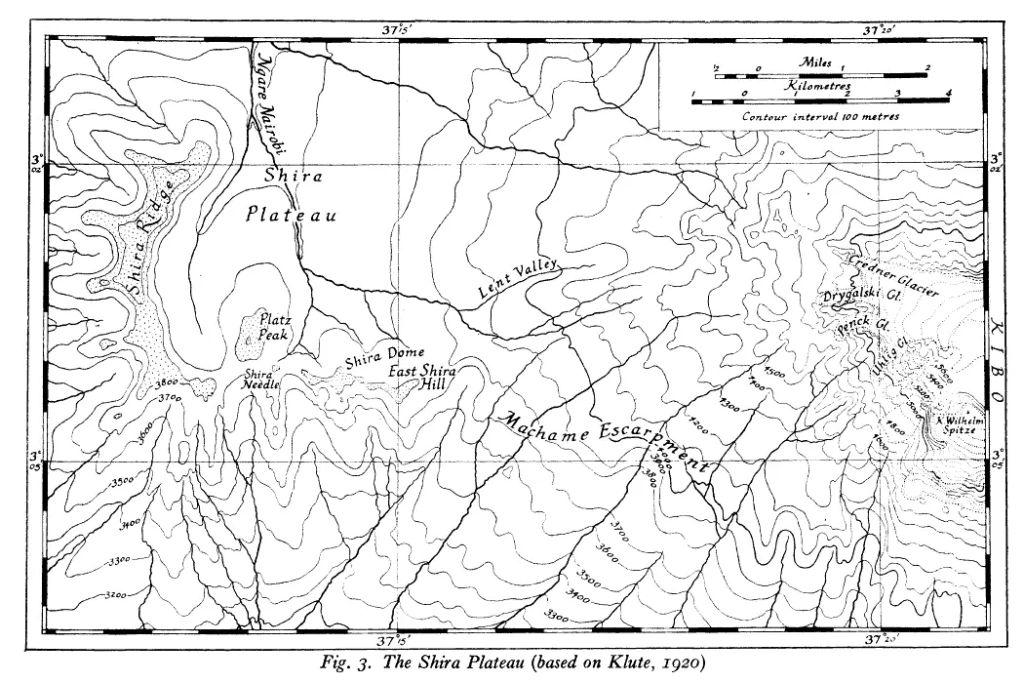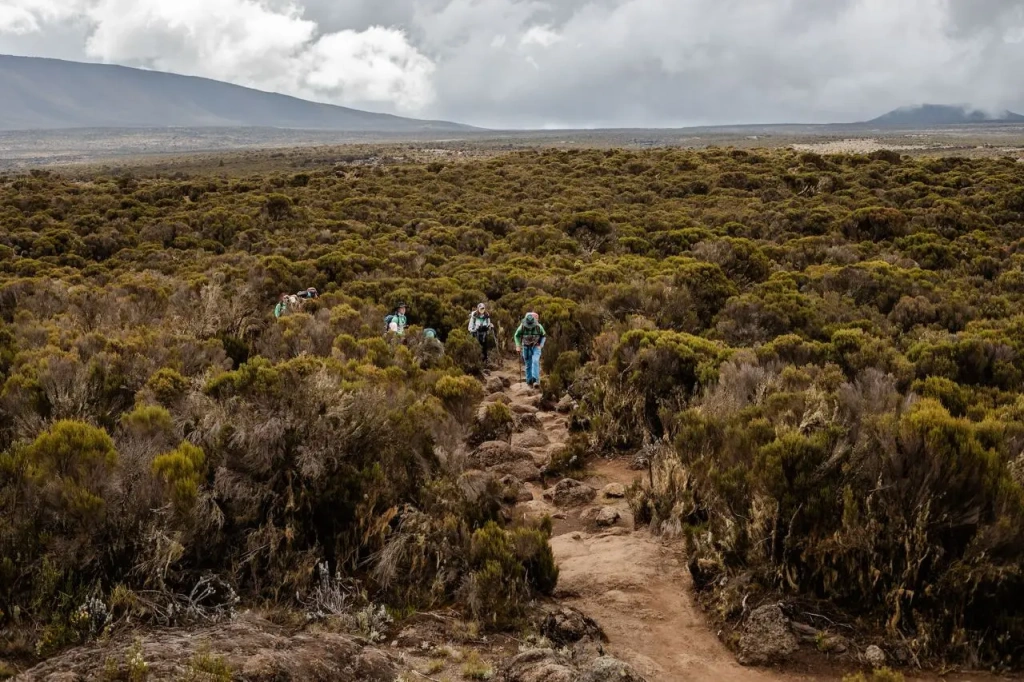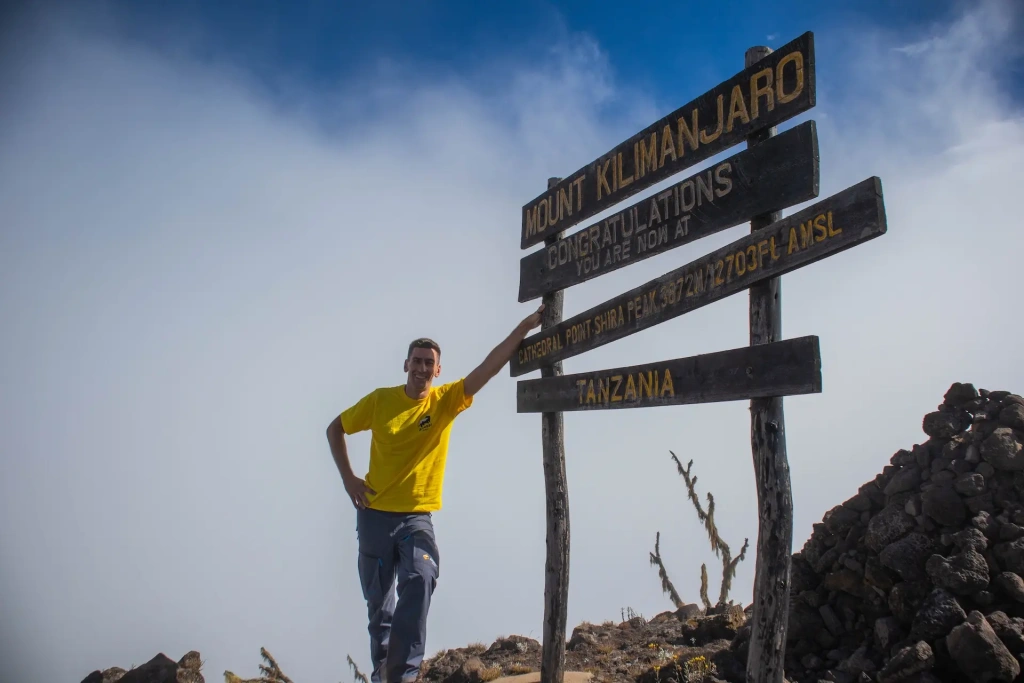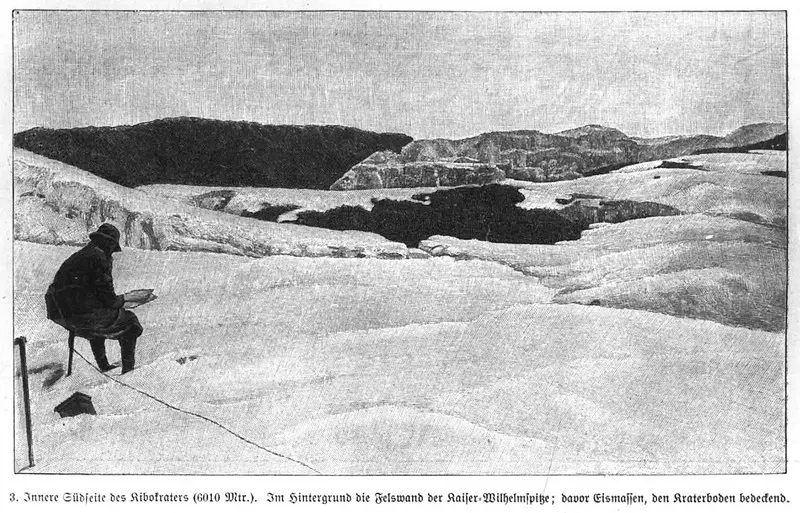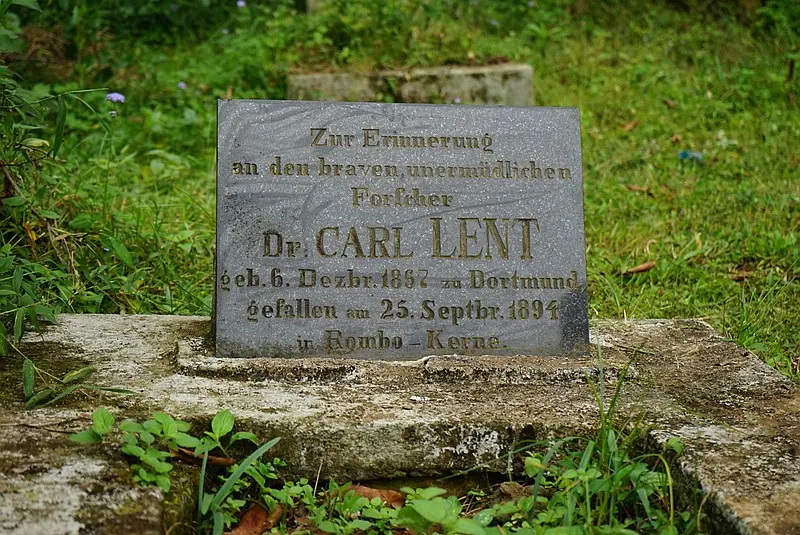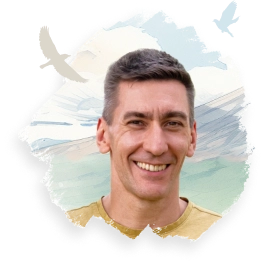Sometimes, in descriptions related to Africa’s Mount Kilimanjaro, Shira is referred to as a plateau, while in other instances, it’s called a volcano. Some descriptions mention that Shira is the name of camps used during Kilimanjaro climbs, or even the name of one of the routes.
Let's delve into what makes Shira so intriguing, explore the fascinating features it offers, and discover the best ways to reach it.
What do people refer to as Shira?
Shira Volcano
Shira is one of that make up the Kilimanjaro mountain range, and it was the first to form. These volcanoes emerged at different times as a result of global tectonic processes. About 2.3 million years ago, volcanic activity began to reshape the landscape of East Africa, leading to the formation of Shira, a volcanic mountain that once stood above the surrounding plains. For comparison, Uhuru Peak, the highest point on Kilimanjaro, rises to 5,895 meters (19,341 feet).
Volcanoes go through life cycles that eventually end when they become inactive. Shira is one such extinct volcano. Its final eruptions 500,000 years ago created the rocky elevations on Kilimanjaro's western side that we see today. But why, when looking at Africa's highest mountain, do we still see the peaks of the Mawenzi and Kibo volcanoes, while Shira is now just a series of isolated ridges and peaks?
Shira Plateau
After the Shira volcano became inactive, two major events reshaped Kilimanjaro. First, the volcanic crater of the Shira collapsed, forming what we now know as the Shira Plateau. Then, about a million years later, a new volcano, Kibo, emerged nearby and spilled lava onto the Plateau's eastern side.
Thus, Shira is both a volcano and a plateau formed after the collapse of its crater walls. Some of Kilimanjaro's climbing routes pass through the Plateau, the most well-known being the Lemosho Route. We highly recommend this route for anyone planning to climb Kilimanjaro for the first time.
Shira Plateau Route
In some sources, you might come across mentions of the Shira Plateau Route, also known as the Shira Route or occasionally the Londorossi Route, named after the park gate where the trek begins. Climbers seldom opt for this route due to its high starting altitude, typically accessed by vehicle. The rapid ascent can hinder acclimatization and often results in altitude-related symptoms.
Overall, while the Shira Route offers stunning scenery and a unique perspective on Kilimanjaro, its high starting point can be a challenging choice for first-time climbers.
The good news is that the Shira Route is nearly identical to the Lemosho Route, which was designed to improve the starting point and make the climb more accessible.
Other routes and camps on the Shira Plateau
As mentioned earlier, the Shira Route has evolved into the modern Lemosho Route, which is often considered one of the most beautiful, if not the most beautiful, routes on Kilimanjaro. It lasts from 6 to 8 days
The second route that can cross the Plateau is the Northern Circuit Route, which, according to statistics, is the least popular. The long panoramic Northern Circuit Route has two starting options: some tour operators offer starting from the northern side of Kilimanjaro, while others start from the west. In the first case, travelers won’t pass through the Plateau but will still see it as they traverse around the Kibo volcano.
To the east of the Plateau, there are two camps with similar names: Shira Camp and Shira 2 Camp. Both accommodate climbers on the Lemosho and Northern Circuit routes on their way to Uhuru Peak (elevation: 5,895 meters / 19,341 feet), with Shira 2 also serves as a stopping point for those who choose the Machame Route. From there, you can proceed to the magnificent and then, via the scenic Southern Circuit, descend to the Barranco Camp.
Now you understand why so many different features on Kilimanjaro bear the name Shira. Interestingly, the Plateau itself wasn’t always known by this name—history has recorded other names for it as well.
Interesting stories from the first explorations
When the first European explorers were climbing Kilimanjaro, the features they encountered didn’t have formal names. For example, German botanist Georg-Ludwig August Volkens, who spent 15 months studying Kilimanjaro in the early 1890s, referred to the Plateau simply as the "side plateau" because it adjoins Kibo. On his 1897 map, he labeled it "Seitenplateau," which translates to "Side Plateau."
As you can see, this map isn’t very accurate. Half a century later, British scientist George Salt reviewed Volkens' notes and map, pointing out that the area northwest of Kibo's central cone seemed ridiculously small based on the botanist's depiction. In reality, Georg Volkens was accompanied by cartographer Carl Lent during the expedition. Lent had planned to create a comprehensive and detailed map of Kilimanjaro through meticulous preparation, making this project quite significant.
In September 1894, Lent and other members of the expedition set out for Rombo, southeast of Kilimanjaro. During this period, German military forces, representing the German Empire in the region, were brutally suppressing any uprisings by local leaders who resisted colonial rule. In response to these repressions, resentment was building among the indigenous people. The Rombo warriors attacked Lent's group, killing 15 individuals, including the 26-year-old geologist Karl Lent.
Due to this tragedy, the mapping of Kilimanjaro remained incomplete. It wasn’t until 18 years later that German explorers Fritz Klute and Eduard Oehler created the first detailed and accurate map. In honor of Carl Lent, they named the valley between the Plateau and Kibo in his honor (today it is referred to as "Lent’s Hills").
After Volkens and Lent, the Plateau was explored by German traveler Hans Meyer, who is renowned for being the first to summit Kilimanjaro's highest peak, Uhuru. Meyer entered the Plateau from the northeast and took a rest in a cave known as Galuma, named after a local chief who had fled and wandered.
Interestingly, the name Galuma appears in various sources, sometimes singular and sometimes plural. At the time, the Plateau did not yet have a name, so Meyer referred to it in his notes as the Galuma Plateau. This name was also used by geographers Eduard Oehler and Prof. Dr. Fritz Jaeger. However, starting in 1920, the name Shira Plateau became more widely adopted and is now the standard designation on maps and in other references.
Where is Shira Plateau located?
The Plateau is located 340 kilometers (210 miles) south of the equator. As part of the Kilimanjaro volcanic massif, Shira is situated in Northern Tanzania, near the border with Kenya.
What is the landscape of Shira like?
Shira is a relatively flat plateau on the western shoulder of the Kilimanjaro massif, covering an area of 62 square kilometers. The elevation change from east to west is within half a kilometer. In other words, once you ascend to the Plateau and move across it, you don't experience significant elevation changes.
The average elevation of the Plateau is about 3,600 meters (11,810 feet) above sea level. Considering all the high points, the elevation ranges from 3,500 to 3,962 meters (11,480 to 13,000 feet).
This vast area is a rocky plain with numerous noticeable boulders of various sizes. Most of the Plateau is covered with vegetation. To the north of the Plateau, there are marshy areas with standing freshwater and numerous streams flowing toward the northern slopes of the mountain.
In the northern part of Shira, you can find numerous pieces of obsidian, a glass-like volcanic material. Locals used this material to make arrowheads; obsidian arrowheads have been discovered in the Plateau's caves. One of the earliest mentions of this was by entomologist George Salt, in an article for in 1951. Interestingly, the oldest obsidian tools are hand axes found in neighboring Kenya.
You might wonder where cultural artifacts come from in such a barren, high-altitude area, where there have never been permanent settlements. It appears that the local Chagga people traveled between villages located on different slopes of the mountain, using trails that passed through the Plateau. Dr. Balletto, a member of the Kilimanjaro Mountain Club, noted in a brief article for the club’s journal in 1965 that Chagga clans engaged in trade during the 19th and 20th centuries. According to reports, members from various villages would meet in the caves on the Plateau, bringing valuable items for exchange. This is also mentioned by researcher Kathleen M. Stahl in her book History of the Chagga People of Kilimanjaro.
What summits and hills surround the Plateau?
The Plateau is surrounded by rocky outcrops to the west and south. To the west, it’s bordered by the Shira Ridge, while to the south lies a series of separate elevations, with the most prominent being the Shira Cathedral. True to its name, this stone ridge rises above the cliff on the southern edge of the collapsed Shira volcano crater and indeed looks like the ruins of a cathedral, complete with supporting buttresses and a central spire.
Shira Cathedral
On some older maps, the Shira Cathedral was labeled as the Dome, which stems from . The German word “Dom” indeed translates to Dome, but the term “Shira Dome” used on some maps is incorrect. The ridge is more reminiscent of a cathedral than a dome. In contrast, the upper part of the neighboring Kibo volcano could be described as a dome. Such translation errors from German can confuse, and we will discuss another example of this further.
The main peak of Cathedral Point rises to 3,872 meters (12,703 feet) above sea level. This peak is a popular final destination of for mountaineers who climb Kilimanjaro via the Plateau. It is also an incredibly beautiful spot offering stunning views on a clear day, both of the Plateau itself and the plains lying below the southern slopes of the mountain. We highly recommend making the effort to climb to Cathedral Point Shira Peak.
To the west of the Cathedral Point stands the solitary Shira Needle, while to the east lies the East Shira Hill. Both formations are prominent and also worth noting.
The Shira Ridge
The western boundary of the Shira Plateau is defined by the Shira Ridge, which features two notable peaks: Klute Peak and Johnsell Point. Klute Peak is named after the German explorer Fritz Klute, who, along with Eduard Oehler, first ascended the highest point of the Mawenzi volcano in 1912. Following this, the scientists explored Shira, mapping all the features they encountered.
Neither Cathedral Point nor Klute Peak are the highest points of the Plateau. The highest peak is Johnsell Point, standing at 3,962 meters (13,000 feet) above sea level. This peak is also located on the Shira Ridge.
Platz Peak/Cone Place
On many maps, there is another notable feature on Shira, which likely formed as a result of the last eruptions of the ancient volcano. It is often referred to as Cone Place. This is another common error related to the history of early research on Kilimanjaro and incorrect translation from German to English. On old German maps, it is labeled as “Platzkegel” or “Platz Kegel.” The British translated the word “Platz” as "place," resulting in "Cone Place."
In fact, Platz is a surname. In 1898, pioneer climber Hans Meyer returned to Kilimanjaro for another expedition, accompanied by the mountaineer and artist Ernst Heinrich Platz, who had a passion for mountains. During that expedition, Platz made numerous sketches and photographs of Kilimanjaro, many of which were later used as illustrations in Meyer’s book about climbing the Roof of Africa.
The highest point of the conical summit was named in his honor as Platz Peak, standing at 3,840 meters (12600 feet). It was British scholar George Salt who first corrected the maps. However, even today, the feature is often labeled as “Platz Cone”.
Lent Hills and Lent Valley
As mentioned earlier, in 1893–94, the young German geologist Carl Lent was conducting extensive research on Kilimanjaro. He planned to undertake significant cartographic studies of the mountain. Unfortunately, his life was tragically cut short when a group of Chagga warriors from Rombo attacked his expedition, resulting in the deaths of several members, including Lent himself.
Today, maps of the Plateau feature hills named in honor of Carl Lent. These are known as either the Lent Hills or the Lent Group. The hills rise to about 4,800 meters (15,750 feet) above sea level, which allows them to be covered in snow during precipitation. On such days, you can see the snow-capped hills to the right of Kibo from the Kenyan side. Between these hills and the slopes of Mount Kibo lies a broad valley, also named after this early Kilimanjaro explorer.
Carl Lent is buried at the southern slopes of Kilimanjaro, in the former German military cemetery in Marangu. His grave can be found on the grounds of the current teacher's college along the road to the Marangu gates.
Shira Plateau FAQ
How to reach the Shira Plateau?
To visit the Plateau, you'll need to embark on a climb to the summit of Mount Kilimanjaro via one of the following routes:
- Lemosho Route;
- Northern Circuit Route.
Can you drive to Shira Plateau?
Yes, you can reach the Plateau by vehicle if you are traveling with Altezza Travel on the Lemosho or Northern Circuit routes. Both routes begin with a transfer by bus to the center of the Plateau at an elevation of 3500 meters (11,480 feet) above sea level. From the bus, you will get views of the rocky plains of the Plateau and, on a clear day, the dome of Mount Kibo. The rest of the expedition is completed on foot, allowing you to get a closer look at the nature of Shira.
What is the weather like on the Shira Plateau?
The Plateau is located in the zone of heathlands and bogs. Daytime temperatures here typically hover around 10°C (50°F). During sunny hours in the warmer months, temperatures can rise. At night, the temperature often drops, sometimes falling below 0°C (32°F). At this altitude, clouds and damp mists are common, which can feel like light rain, causing travelers' clothing to become instantly wet. The annual rainfall on the Plateau ranges from 530 to 1300 mm.
All content on Altezza Travel is created with expert insights and thorough research, in line with our Editorial Policy.
Want to know more about Tanzania adventures?
Get in touch with our team! We've explored all the top destinations across Tanzania. Our Kilimanjaro-based adventure consultants are ready to share tips and help you plan your unforgettable journey.
















